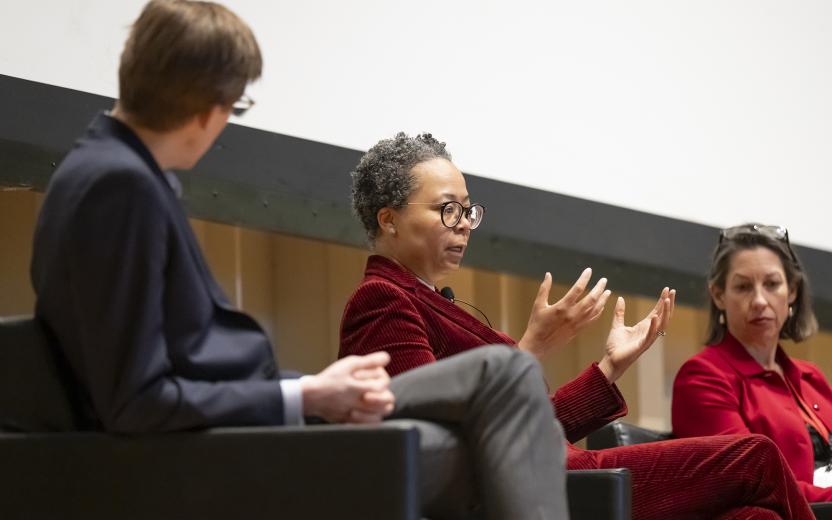
Cornell University Library has launched a new exhibit that celebrates the African American tradition of quilt making as expressions of artistry, history and community.
The exhibit, Ties that Bind: Quilting at the Clarke Africana Library, is open through June 12, at the John Henrik Clarke Africana Library.
The first section of the exhibit, Precious Scraps: Toni Morrison and the African American Quilting Experience, pays tribute to the Nobel Prize-winning writer and Cornell alumna who explored the fullness and complexity of Black life throughout her work; Morrison earned a master’s degree from Cornell in 1955. “Precious Scraps” features pieces originally contributed to a 2021 quilting project led by Cornell University Library, which marked the 50th anniversary of Morrison’s novel “The Bluest Eye” and provided an opportunity for quilters to connect with each other virtually during a time of social distancing due to the COVID-19 pandemic.
Co-curated by Marcie Farwell, the Gordon and Marjorie Osborne Textile Industry Curator, Precious Scraps showcases quilters and fabric artists from across the country along with members of the Cornell community. They include Riché Richardson, a visual artist and professor of African American literature (College of Arts and Sciences), and students in a first-year writing seminar, “Craft Culture: Craft, Art, and Gender in Context,” taught by Alexandra Dalferro, Ph.D. ’21.
“Integrating the project into class activities helped to emphasize the theme of how race and gender intersect with the politics of recognition and material outcomes for makers, and enabled us all to use our hands to think about skill, making processes, and the different kinds of knowledge that reside in the body,” said Dalferro, who completed her Ph.D. in anthropology and now teaches at the National University of Singapore.
Quilting also brought students closer together, said Alicia Gonzalez ’24, a junior studying sociology with minors in public policy and American studies.
“Spending time working on our squares in class helped foster a sense of community, which reflects themes of the social significance of craft and making that we learned about,” she said.
The second part of the exhibit, Pieces of Ithaca: A Celebration of Quilting in the Ithaca Community, highlights local talent while honoring the African American tradition of quilting, said Patricia Abraham, exhibit co-curator and a librarian at the Clarke Africana Library.
“Enslaved people brought their traditions with them from Africa and continued with quilt making even after the end of slavery,” she said. “And we see throughout African American history the importance of the quilt – as a family symbol, as a resistance symbol being passed down from generation to generation.”
Andrea Campbell Gibbs, one of the featured quilters, explored the iconography of West African adinkra symbols, which represent aphorisms and celebrate important life events.
Like Abraham, Gibbs sees quilts as powerful symbols of the African American diaspora.
“We are fabric that was pieced together with other fabrics to become the design of the quilt we know as America,” she said.
Ties that Bind is part of a series, Threads of History: Textiles at Cornell, featuring various collections across Cornell University Library.
This story also appeared in the Cornell Chronicle.





